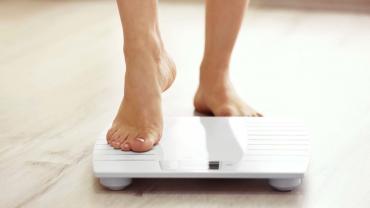
The battle against stubborn body fat is one many patients are all too familiar with. For some people even a healthy diet and properly designed exercise plans aren’t enough to get unwanted excess pounds to go away for good. While no supplement can be considered a magic pill or silver bullet when someone is already doing “all the right things” but results are lackluster there are certain compounds that might give a little boost and that small nudge in the right direction might be enough to take things to the next level. For stubborn fat loss thermogenic aids are among the compounds that could provide this edge.
One such compound is 3-acetyl-7-oxo DHEA a stabilized form of 7-oxo DHEA. Once ingested acetyl-7-oxo DHEA is cleaved to 7-oxo DHEA a DHEA metabolite naturally found in the body and usually referred to by the name “7-keto-DHEA” or sometimes just “7-keto.” Similar to DHEA 7-oxo DHEA levels are known to decline with age. By age 40 some may experience as much as a 40% drop in 7-keto DHEA and DHEA levels as compared to average levels at age 25. However unlike DHEA 7-oxo DHEA exerts metabolic effects without being converted into estrogenic or androgenic hormones.
In terms of potentially boosting fat loss animal and in vitro studies show that 7-oxo-DHEA induces an increased proton leak through the mitochondrial inner membrane which may contribute to an enhanced thermogenic effect. 7-oxo-DHEA may induce uncoupling proteins thereby reducing mitochondrial membrane potential and increase substrate oxidation rates—meaning it may take more “calories” to produce the same amount of ATP.
Of course 7-oxo-DHEA should not be relied upon exclusively for weight loss. Someone eating ad-libitum of a standard American diet and remaining sedentary can’t expect to pop a few pills and experience unprecedented and effortless body recomposition. But in the context of exercise and a reduced calorie diet this compound might provide an extra bit of “oomph.” Compared to overweight but otherwise healthy subjects taking a placebo individuals who took a product containing 7-oxo-DHEA (along with other supportive nutrients such as L-tyrosine manganese copper and potassium iodide) experienced small but significant decreases in weight and BMI during an eight week intervention with exercise and a reduced calorie diet.
Another study in overweight adults had similar findings. In a program that called for eight weeks of an 1800 calorie per day diet plus an exercise session for 60 minutes three times per week (aerobic and anaerobic exercise under the supervision of an exercise physiologist) addition of 7-oxo-DHEA (100 mg B.I.D.) resulted in significant reductions in body weight—and more importantly body fat—than the same regimen with a placebo. The study also found that in those taking 7-oxo-DHEA levels of triiodothyronine (T3) increased significantly compared to those on the placebo without any significant changes to T4 or TSH. Higher levels of T3 could have a beneficial impact on overall metabolic rate which may be responsible in part for the observed effects of 7-oxo-DHEA. (Thyroid hormones may also induce mitochondrial uncoupling and heat generation. Perhaps this helps explain why persistent feelings of coldness are a classic sign of hypothyroidism.)
An additional edge 7-oxo-DHEA may have for dieters is that it may prevent the decline in resting metabolic rate typically induced by low-calorie dieting. In a promising double-blind crossover study (but one of very short duration—just 7 days) in subjects following a low calorie diet 7-oxo-DHEA increased resting metabolic rate by an average of 1.4% compared to a decrease of 3.9% during the placebo period. Perhaps not anything earthshattering but for individuals who struggle mightily to lose even a few ounces this compound may be of benefit.
Another mechanism possibly responsible for 7-oxo-DHEA’s influence on metabolism and body weight is interactions with the enzyme 11-beta-hydroxysteroid dehydrogenase 1 (11β-HSD 1). Among many other functions in steroid hormone regulation this enzyme converts cortisone into active cortisol. Even in the absence of increased food intake or decreased physical activity elevated cortisol can be a roadblock to fat loss. Metabolites of DHEA such as 7-keto and 7α or 7β hydroxyl DHEA may competitively inhibit 11β-HSD 1 thereby reducing circulating cortisol levels.